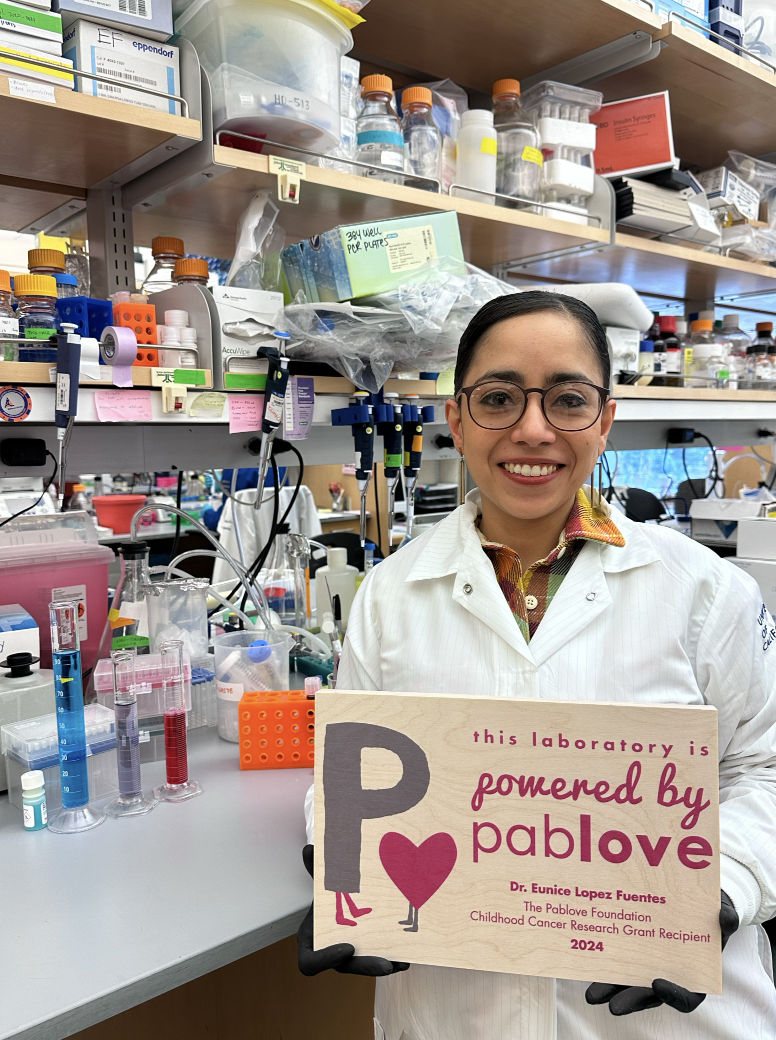Eunice Lopez Fuentes, Ph.D
University of California, San Francisco
Novel combination therapies to target metastatic osteosarcoma based on epigenetic analysis of chromatin accessibility

Grant Sponsor
DNA organization in cells affects how osteosarcoma, a cancer with outdated treatments, developes. By studying these DNA patterns using her Powered by Pablove funds, Dr. Lopez Fuentes hopes to design better therapies. Early findings suggest two DNA patterns in osteosarcomas, each responding differently to drugs. Her project involves testing drug combinations on these different DNA patterns on patient samples and against actual tumors in animal models.
In Dr. Lopenz Fuentes’ own words:
The organization of DNA is critical to determine what a cell is capable of doing at a given time. For example, a brain cell and a liver cell contain the exact same DNA. However, their functions are completely different because of how the DNA is organized, which determines what genes contained in the DNA are “ON” and what genes are “OFF”. The study of DNA organization is called “epigenetics”. The focus of my work is on Osteosarcoma, a disease for which therapy has not changed for over 40 years. In particular, I am interested in studying the epigenetics of osteosarcoma because I believe this may hold clues as to how to design better therapies. I want to determine what is the DNA organization in osteosarcoma tumor cells because this may help understand how osteosarcoma spreads (metastasizes) and how it resists therapy. In my preliminary work, I have found two organization patterns between osteosarcomas based on epigenetics. Tumors with these two organization patterns respond to different drugs. As a next step, I want to evaluate different combinations of drugs targeting both patterns. I also want to confirm the existence of both patterns in a wider set of primary patient samples. I will take advantage of a well-developed system in our laboratory where I can evaluate tumor growth and metastasis in mice.